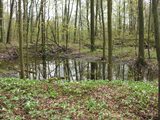
Forests provide habitat for a whole range of plants and animals, large and small. Each forest species has a unique set of conditions optimal for health and sustainability. No one site or forest can provide for all species, so a range of different site conditions, tree species, ages, and structural characteristics are required to maintain the diversity of plants and animals native to Vermont.
Managing Forested Habitats
Understanding the structure and function of habitats allows for managing forests in ways that increase the abundance and distribution of wildlife habitat. Landowners interests in promoting wildlife species has led to a variety of publications with methods for managing forests to increase birds and other species.
Foresters For The Birds: http://vt.audubon.org/foresters-birds
Maine Audubon Sustainable Forestry publications: Sustaining the ecological integrity of managed forests; principles and practices for the northeastern forest region.
Focus Species Management See: Technical Guide to Forest Wildlife Habitat Management in New England.
New England Wildlife: Habitat, Natural History, and Distribution.
Landowner's Guide to Wildlife Habitat: Forest Management for the New England Region.
